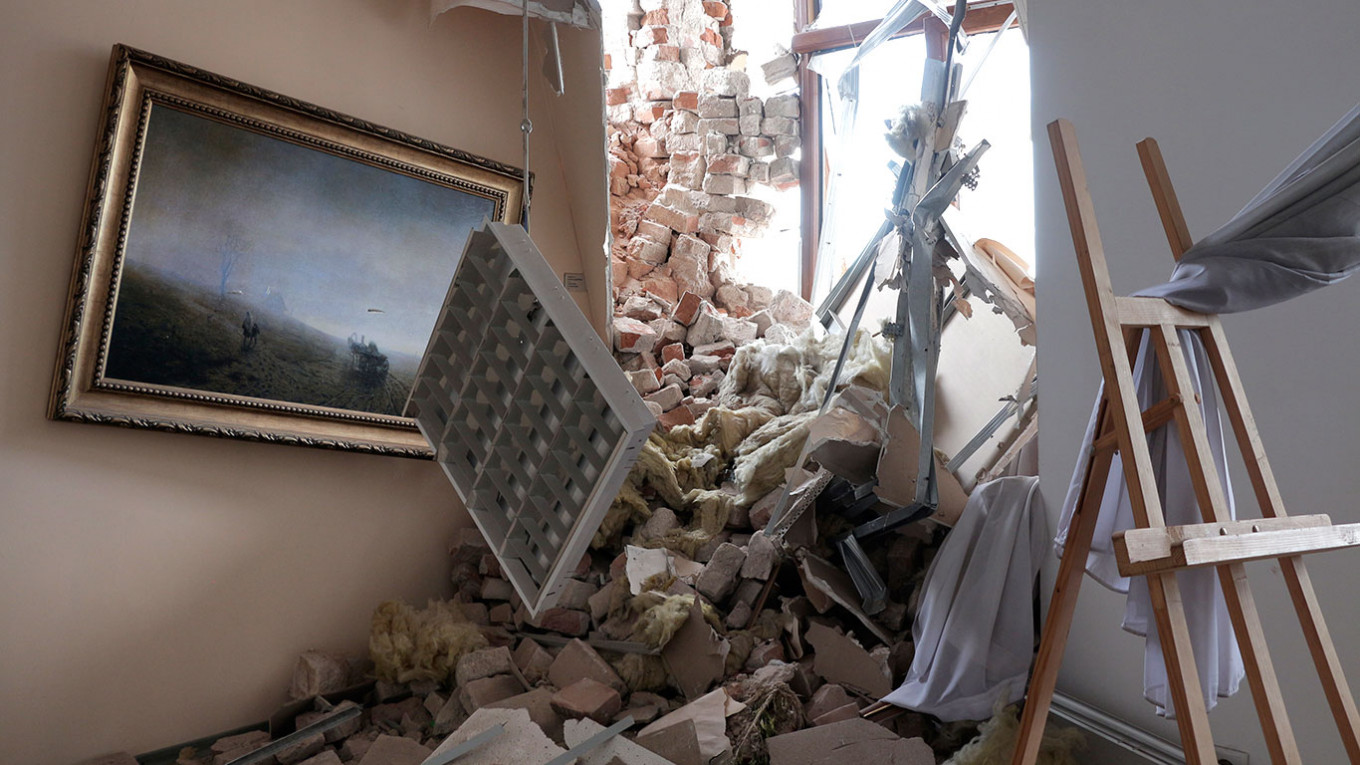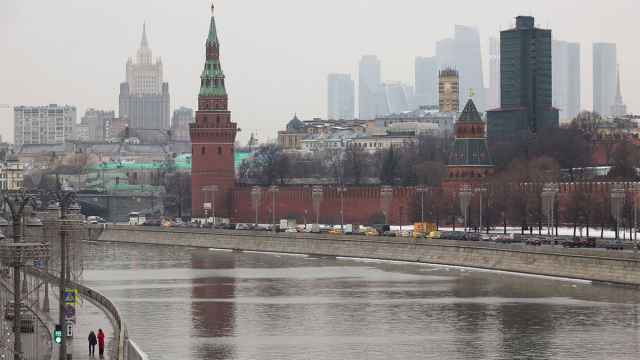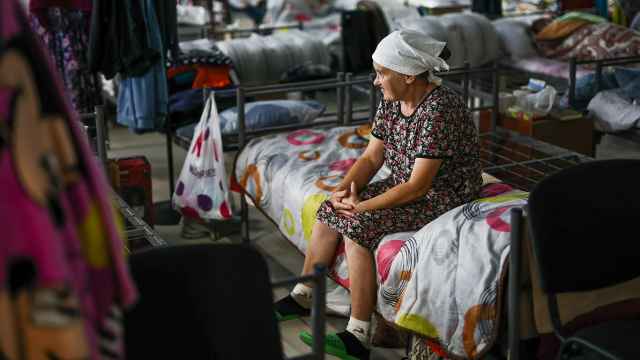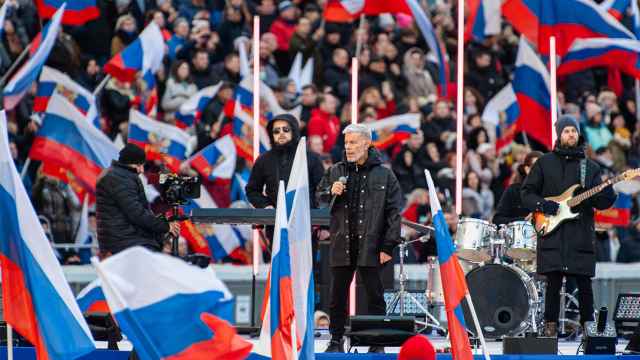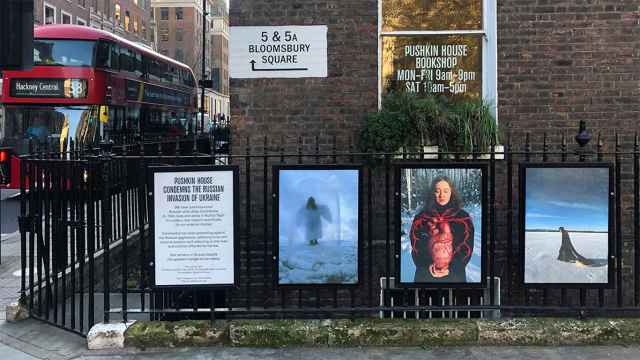At first, Natalia Kapustnikova refused to tell the group of men in black balaclavas and military uniforms where they could find the priceless 19th-century paintings owned by her museum in the Ukrainian port city of Mariupol.
As explosions sounded outside, the men said they were particularly interested in luminous landscapes by Arkhip Kuindzhi, a Mariupol-born artist who spent much of his career along the northern Black Sea coast in the 19th century.
One of the men, Alexander Mozgovoi, a television news anchor in eastern Ukraine’s breakaway Donetsk People’s Republic (DNR), told The Moscow Times that he posed the question to Kapustnikova directly.
“Where are the Kuindzhis?”
In front of television cameras, Kapustnikova apparently only admitted that they were being hidden in a secret place.
“[But] when she spoke to the [DNR] culture minister off-camera in a whisper, I heard her say that the secret place was her home,” said Mozgovoi.
Much of Mariupol, including its museums, was destroyed or badly damaged in a three-month battle that began after the Kremlin ordered troops into Ukraine in late February. As street fighting raged, valuable museum exhibits – including Kuindzhi’s works – were tracked down and removed by Russian forces in what appears to be a coordinated effort to strip the city of its cultural heritage.
Ukrainian officials have accused Russia of widespread looting on Ukrainian territory since the beginning of the invasion, and UNESCO said last month that 152 cultural or historic sites in Ukraine had been partly or wholly destroyed.
Once Kapustnikova had admitted that day – April 25 – where the paintings were hidden, the group of men wasted no time in locating them.
Soon after, Mozgovoi posted a photo to Instagram showing himself holding Kuindzhi’s “Red Sunset on the Dnipro,” an artwork likely worth several million dollars that is an early version of a famous painting.
Another early version hangs in the Russian Museum in St. Petersburg, while the painting itself is in New York’s Metropolitan Museum of Art.
In footage released two days later by pro-Kremlin media, Mozgovoi, Zheltyakov and men in balaclavas can be seen packing up priceless paintings in Mariupol and loading them into a minivan.
While Mozgovoi maintained that the artworks were transported to the separatist capital of Donetsk for safekeeping, Ukrainian officials have accused Russia of theft.
A day after reports of the removal appeared on Russian state media, Mariupol’s mayor said Russia had stolen “more than 2,000 unique exhibits.”
Petro Andriushchenko, a city council member, accused Kapustnikova of collaborating with the Russians and handing over valuable artworks including Kuindzhi’s “Autumn” and “Elbrus,” seascape artist Ivan Aivazovsky’s “The Coast of the Caucasus,” paintings by painter Nikolai Dubovsky and a bust of Kuindzhi by sculptor Vladimir Beklemishev.
"Nothing has been stolen," said Mozgovoi.
The Moscow Times was unable to reach Kapustnikova or Mariupol’s local history museum, where she is officially employed. The Local History Museum was badly damaged during fighting, according to footage posted online and media reports.
The removal of the Kuindzhi paintings from Mariupol is "part of a wider attempt to erase cultural heritage in Ukraine," according to Mollie Arbuthnot, an expert on Russian art at Cambridge University.
While the seizure of the artworks generated headlines, it was not the first time a group from the DNR had removed museum exhibits from Mariupol.
Mozgovoi told The Moscow Times that he and Pavel Chuprin, a freelance photographer, visited Mariupol at least once before to remove exhibits from the Kuindzhi Center for Contemporary Art and Culture.
In particular, Mozgovoi and Chuprin said they took more than 200 medals made by 20th-century artist Yefim Kharabet.
Chuprin told The Moscow Times that on April 25, he and Mozgovoi also took contemporary art sculptures from a temporary exhibition at the center.
“One sculpture had very fragile fragments sticking out in different directions, and they were very vulnerable. Every time there was a bump, something would ‘clang’,” Chuprin said of the journey back to Donetsk with the artifacts.
The events in Mariupol appear to fit a pattern of museum exhibits being seized across southern Ukrainian towns and cities occupied by Russia.
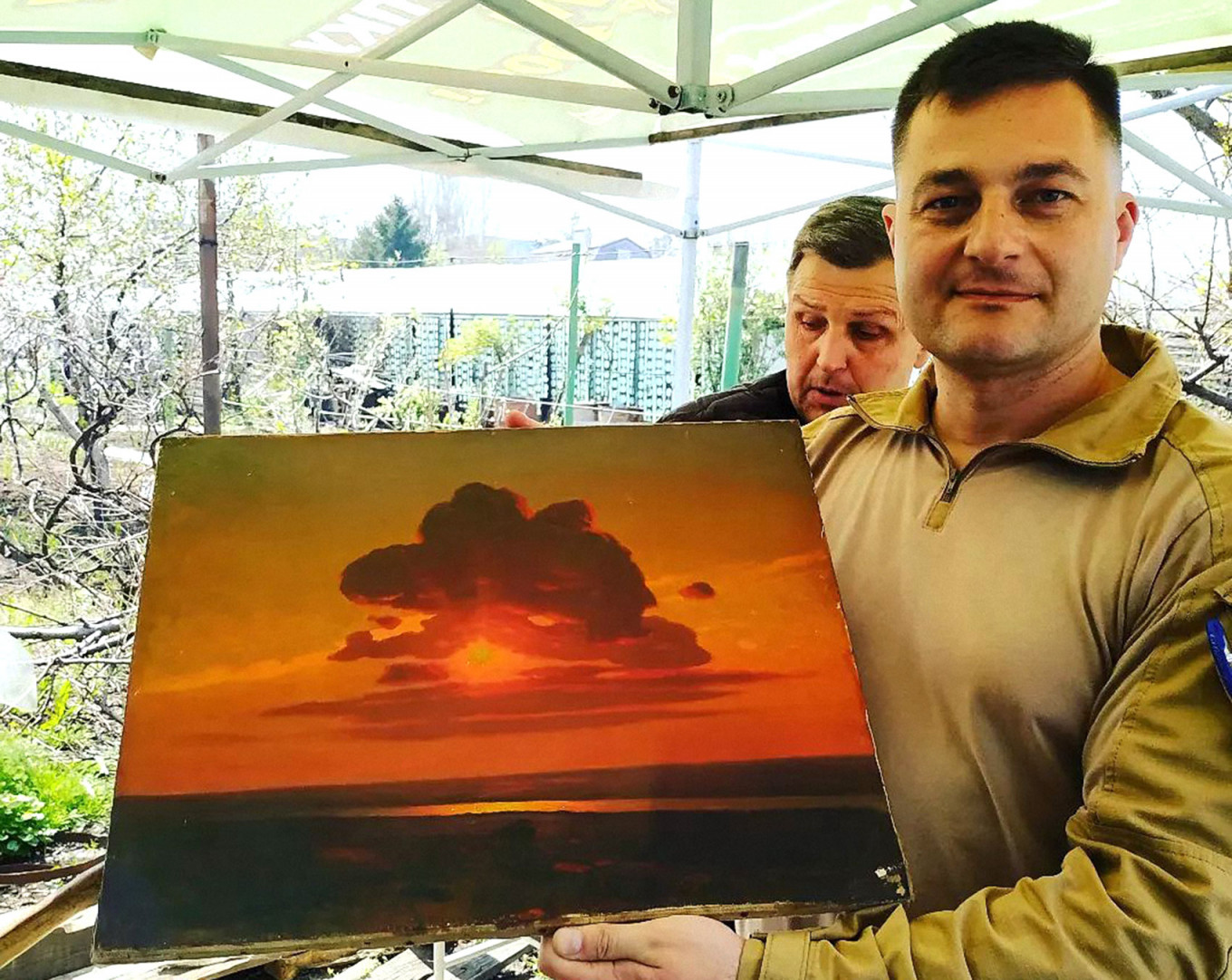
Ukrainian prosecutors accused Russia last month of stealing ancient Scythian gold from Melitopol’s local history museum, and media reports have suggested that there was an attempt to loot exhibits from Kherson’s art museum.
But the targeting of works by world-renowned Kuindzhi in Mariupol and the significant damage to both the Kuindzhi Art Museum and the Kuindzhi Center for Contemporary Art and Culture – the only museums dedicated to Kuindzhi in Ukraine – is particularly symbolic as Russia seizes swathes of Ukrainian territory, portrays the Ukrainian leadership as “Nazis” and questions the existence of a distinct Ukrainian identity.
Kuindzhi, whose father was a Pontic Greek, was born and spent his childhood near Mariupol and is considered by many to be a Ukrainian artist.
But because he studied at the St. Petersburg Academy of Arts, many Russians also see him as part of their artistic canon.
Kuindzhi was “certainly not Ukrainian,” according to Mozgovoi.
In fact, the artist worked in both countries, which were then part of the Russian Empire, and painted both Ukrainian and Russian landscapes.
"Kuindzhi’s paintings are very much rooted in a specific sense of place – the banks of the Dnipro, Lake Ladoga and the forests around it, [and] the steppe of southern Ukraine," said art expert Arbuthnot.
"We do not need to insist on the ‘Ukrainianness’ of Kuindzhi’s works to argue that such an act of vandalism is wrong, or that viewing his history through a Russian nationalist lens is misguided."
Kuindzhi’s “Red Sunset on the Dnipro” and other paintings removed from Mariupol are currently in the Local History Museum in Donetsk, according to Mozgovoi and a spokesperson for the museum.
A total of 25 paintings from Mariupol, including three Kuindzhis, are in storage, the head of scientific and storage work at the Donetsk History Museum Lina Garmash said in written comments last week.
There are no plans to exhibit the paintings and they "do not require urgent restoration," she added.
Mozgovoi said he had not seen the Kuindzhi paintings since they were packed up and removed from Mariupol in late April.
DNR culture minister Zheltyakov read messages on Telegram from The Moscow Times, but did not respond.
A Message from The Moscow Times:
Dear readers,
We are facing unprecedented challenges. Russia's Prosecutor General's Office has designated The Moscow Times as an "undesirable" organization, criminalizing our work and putting our staff at risk of prosecution. This follows our earlier unjust labeling as a "foreign agent."
These actions are direct attempts to silence independent journalism in Russia. The authorities claim our work "discredits the decisions of the Russian leadership." We see things differently: we strive to provide accurate, unbiased reporting on Russia.
We, the journalists of The Moscow Times, refuse to be silenced. But to continue our work, we need your help.
Your support, no matter how small, makes a world of difference. If you can, please support us monthly starting from just $2. It's quick to set up, and every contribution makes a significant impact.
By supporting The Moscow Times, you're defending open, independent journalism in the face of repression. Thank you for standing with us.
Remind me later.


